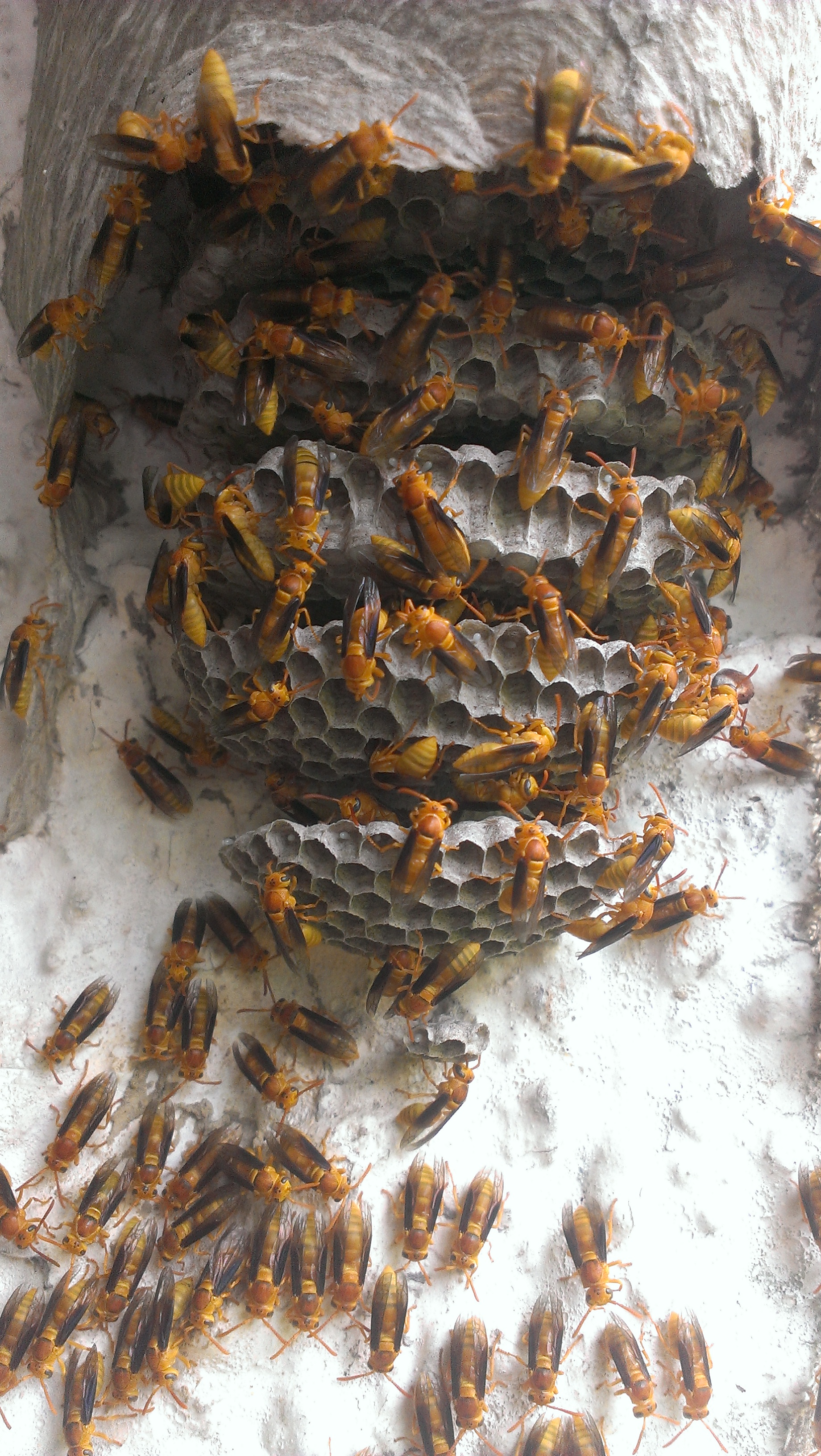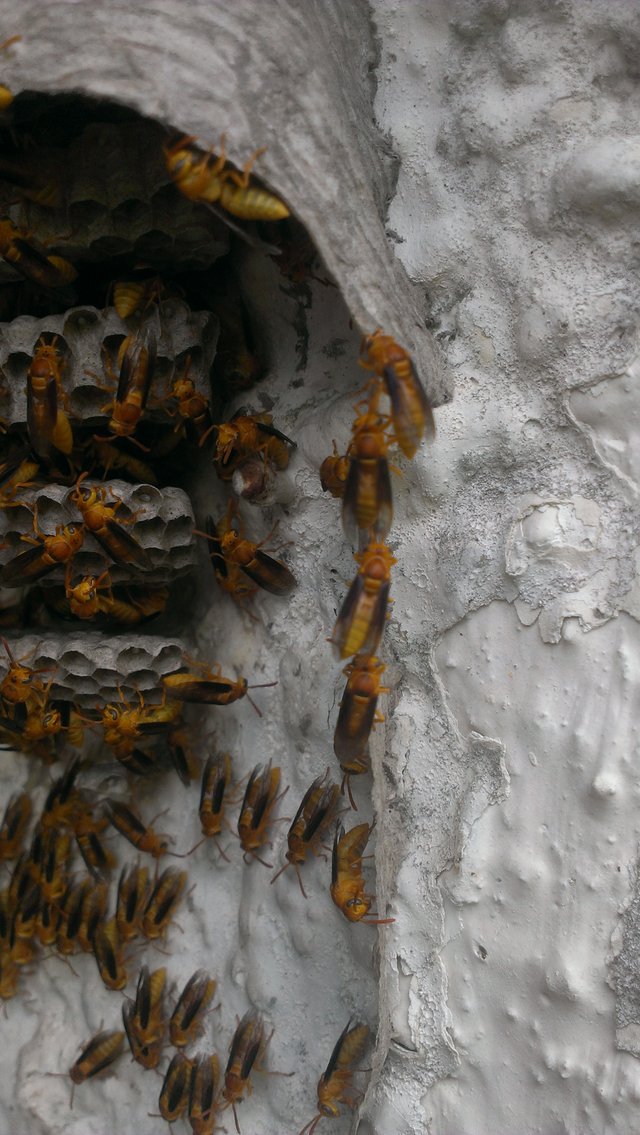Amazing creatures #3, the Wasp. (Complexity at its finest)
The term wasp is usually defined as any insect on the order of Hymenoptera and Apocrita suborder that is neither a bee nor an ant. Almost all species of insect pests have at least one species of wasp that takes advantage of them or is parasitic, making the wasps critically important in the natural control of their number, or their natural biological control.

Image of my authorship with a HTC One X.
One of the main reasons why I do this article is because everyone always talks about the bees, but has anyone ever noticed the wasps?
There is a lot of variation among the different species of wasps, but in general, their morphology is constituted by head, thorax and abdomen, protected by a hard exoskeleton. The 3 parts are called head, mesosoma and metasoma. It measures up to 3.8 centimeters in length.
It has several eyes or ocelli that have the ability to differentiate luminosity and darkness and are better developed in nocturnal wasp species. It has 2 pairs of wings, 1 large pair and another smaller rear pair, joined by a series of hooks called a frenulum. The females of some species are devoid of wings. Its antennas are formed by a series of segments called escapo, pedicel and flagellum. They also have teeth with which they can bite and the body, in some species, is covered with thick hairs. It has 3 sets of 2 legs each.
The part most associated with the wasp is the sting that is only in the possession of the female since said organ is derived from the female organ called ovipositor.

Source
The color of the wasp can be black or dark brown. The best-known wasps are black and have yellow stripes.

Source
The wasp is present almost anywhere in the world. Their habitats are very varied, but usually prefer sunny sites to build their nests. These are located in mounds next to walls, under floors or eaves of houses, in trees, in plants, riverbanks and underground holes.
The behavior of the wasp is divided into two categories: solitary and social.
There are approximately 1,000 species of social wasps, among which are the creators of huge colonies. The nest is first built by the queen wasp and the colony is composed of several thousand generally infertile individuals. Only the queen and the males can mate, the others dedicate themselves to work in the nest.

Image of my authorship with a HTC One X.
Lonely wasps are fertile and live and work on their own. Many do not build nests and instead make mud cells in trees or walls. Others live in wooden holes.

Source
When it is adult, the wasp feeds on the nectar of the flowers and in the larval stage its diet is composed of larvae, but in general it is an omnivorous insect because it can catch other small insects to supplement its feeding. It consumes fallen fruits and even carrion. Wasps feed their larvae with insects that hunt, such as caterpillars and aphids, this is useful for humans, as caterpillars and aphids devastate entire crops. They also feed on the gills, which are tissues that grow around the wasp eggs.

Source
At present there are no major threats to the wasp, nor is it in danger of extinction. However, factors such as pesticides or natural predators are threats to individuals or colonies exposed to them. They are commonly found in almost any area of the world, whether rural or urban.
References:
-https://www.nationalgeographic.com/animals/invertebrates/group/wasps/
-https://io9.gizmodo.com/5873150/everything-you-always-wanted-to-know-about-the-social-behavior-of-wasps
-https://www.ncbi.nlm.nih.gov/pmc/articles/PMC3016966/
-https://www.waspbane.com/?page_id=124
-https://animalsake.com/wasps-life-cycle
-https://books.google.co.ve/books?id=WLIOwLemzyQC&pg=PA416&lpg=PA416&dq=wasps+reproduction&source=bl&ots=OUZgPAkmd8&sig=o0lCztXNjHmQPUjvUiM7nc-dGok&hl=es&sa=X&ved=0ahUKEwj7xKr3m_nYAhVLrFMKHVPYBBA4ChDoAQg2MAI#v=onepage&q=wasps%20reproduction&f=false
I hope you liked it! Please comment and share for more post like this and, if you liked, follow me! @josevbc .
beautiful and intersting expository post you have here, i really learnt from this posts thnks again for sharing
thank you for your comment!
Wow i'm still baffled at how much of the world we are yet to discover, especially inside Africa.
Great work you've done. Thumbs Up